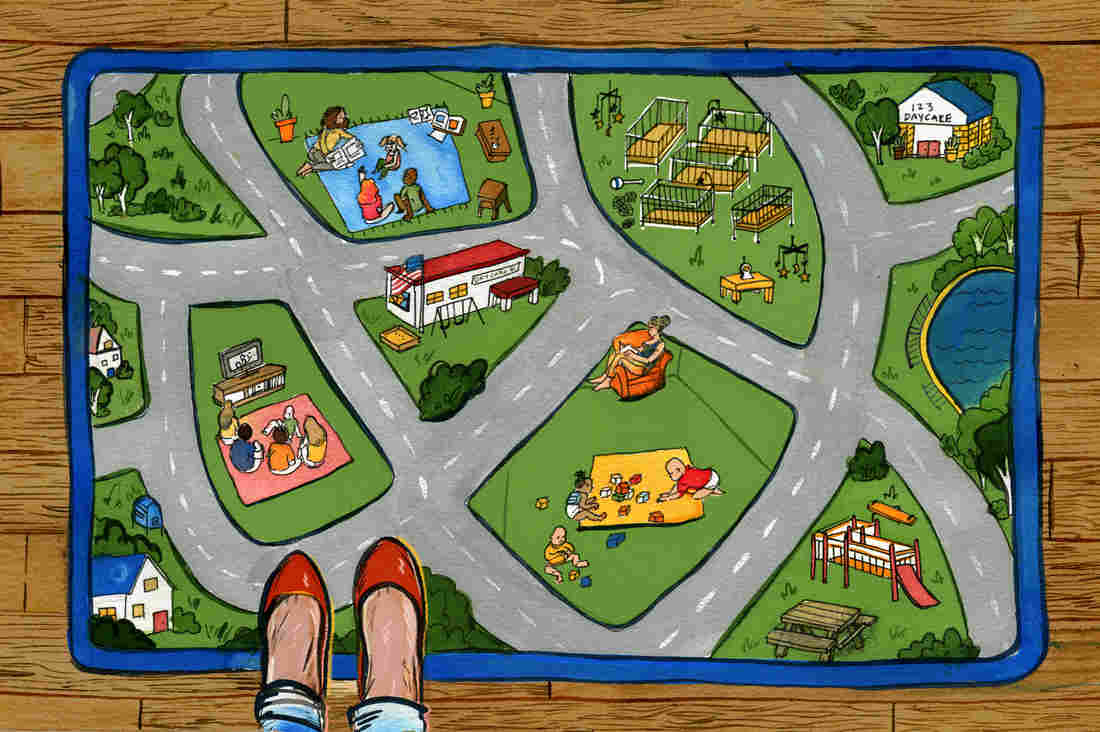There are rating systems for hospitals, nursing homes and doctors. So why is it so hard to compare providers of child care?
Part of the reason is that there are no nationally agreed-upon standards for what determines the quality of child care. The standards that do exist are formulated in each state, and they vary widely.
For example, some states require that child care workers have a teaching certificate. Others require certain college courses. Some have strict ratios of how many caregivers are required per child.
But all of these criteria are important in assessing the quality of a child care facility, says Susan Hibbard, director of Build Initiative, which works with states developing early childhood programs.
What’s needed, she says, is a tool that makes it easier for parents to evaluate and compare the child care options in their communities.
“So you know that if you see 3 stars out of 3 stars, your child is going to have teachers who are nurturing, have experience, understand child development and know how to work with children and help them thrive,” she says.
About 20 states are “on their way,” Hibbard says, having received federal funding in 2011 to build a system to define, measure and improve quality. Some states are working to create online tools based on standards suggested by the federal Department of Health and Human Services. These standards are the basis for a rating system HHS calls the Quality Rating and Improvement System.
A recent poll by NPR found that among parents whose child gets care from someone other than a relative, 71 percent cite quality as one of the top two or three reasons for choosing one child care provider or program over another. Our polling partners are the Robert Wood Johnson Foundation and the Harvard T.H. Chan School of Public Health.
The quality factors most frequently volunteered by parents included trustworthy providers (20 percent), activities for learning (13 percent), educated/well-trained providers (12 percent) and activities for building friendships (7 percent). Parents cited more than a dozen other quality factors as important to them.
A more comprehensive rating system might have helped Kinsee Morlan avoid problems with a child care provider, even though she did do her best to find out basic information.
When Morlan got pregnant with her first child, Harper, she and her husband started looking for day care. They explored lots of options, including large day care centers near their San Diego home. But the large centers, with lines of cribs and lines of rocking chairs, just weren’t for them. “I just couldn’t wrap my brain around that,” Morlan says.
Eventually they decided on a small home setting, which seemed perfect. It had a little preschool room in the back of the house, which was “like this magical little room with glass windows everywhere, really bright and in a garden,” Morlan says, adding it was just the kind of place it seems kids “would love to be.”
Morlan made sure the day care center was licensed by the state of California, and she even checked to make sure there were no serious infractions on file.
Harper was less than a year old when she enrolled him.
Everything seemed to be going well until one day the caretaker mentioned Harper had been kicking and screaming while in a car seat.
Morlan and her husband didn’t think much about it until they got home that night, changed his diaper and saw deep red abrasions on his leg.
“As a first-time mom, I freaked out,” Morlan says. She took Harper to urgent care, where doctors “gave us a grave look” and said it looked like Harper was in some sort of car seat or child holding device for “way too long.”
She says she and her husband lost faith in the day care system after that and decided to care for Harper within the family. Morlan took off work one day a week. So did her husband. Morlan’s mother-in-law filled in the other three days.
The parents made this commitment: They would not send Harper to preschool until he could communicate clearly and tell them what happened at school.
Today, Harper is 3 and is enrolled in preschool. Morlan makes sure that she asks him how his day went every day.
While this case is extreme, it’s an example of the difficulty parents face when trying to figure out if a day care program is good, just OK or bad.


